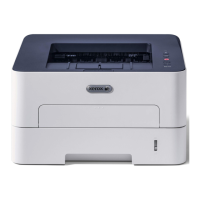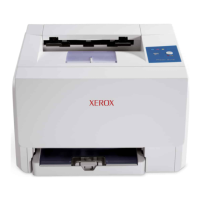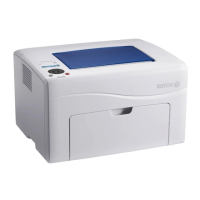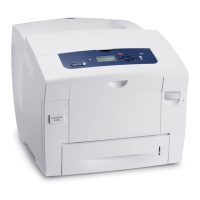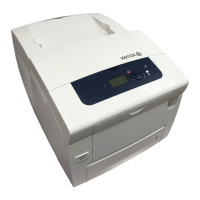When
the
CCP/SCSR switch is in
the
CCP position and
switch 0 is in the
'rOil
position, switches 3 through 7
specify
the
binary address of
the
cabinet
whose
Read
Direct
Mode 9 Status Register is to be displayed by the 32 panel
indicators.
When
the
CCP/SCSR switch
IS
In
the CCP position and
switch 0 is in the
11111
position, switches 3 through 7 specify
the binary address of
the
cabinet
whose
16-bit
Configura-
tion Status Register is to be displayed by
the
16 lower-order
indicators.
SINGLE CLOCK
ENABLE
This switch stops all
central
system clocks in
the
same
manner as the
ZCCLK
command. Activating this switch
when
the
basic processor
is
performing normal
data
processing
may have an adverse effect on any
active
I/O
operations.
To
prevent inadvertent
activation
of this
control,
it
is
disabled unless the MAINT MODE switch is in
the
ON
position.
SINGLE CLOCK
STEP
This switch is
active
only when in Single Clock Mode or
when the Single Clock Enable switch is
active.
When
active,
this switch causes one system
clock
to be issued
each
time
it
is
placed
in the
STEP
position. The new
single
clock
status, as
selected
by
the
MODE and
SELECT
switches, may .be monitored
via
the
32 binary indicators
C~
the Sy!te!!!
Cc~t!"c!
P(!~e!;
~~
~:H!:p!(!y
;!:
ge~er~ted
0~
thE'
System Control Console
by
activation
of the SCP Single
Clock Step switch.
OPERATING
PROCEDURES
AND
INFORMATION
This section contains reference information which
may
be
required by either the operator or maintenance/diagnostic
personnel.
LOAD
OPERA
nON
DETAILS
The first
executed
instruction of
the
bootstrap program
{in
location X'26'} loads general register 0 with
the
address of
the
first
I/O
command doubleword (IOCD). The
I/o
address
for the SIO instruction in location
X'27'
is the
13
low-order
bits of location
X'25'
{which have been set equal to the load
unit address
asa
result of the NORMAL LOAD,
ZCLDN"",
command}. During execution of the SIO instruction,
gen-
eral register 0 points to locations
X'20'
and
X'21'
as
the
first IOCD for
the
selected
device.
This IOCD contains
an
order
to
the
selected peripheral
device
to read 88 (X'58')
bytes of
data
into consecutive memory locations beginning
at
word location X'2A' (byte location X'A8'). At
the
end
of
the
Read operation,
neither
data
chaining
nor command
chaining is
called
for in
the
10CD.
The Suppress Incorrect
Length
(SIL)
flag is set to 1 so
that
an
incorrect length
in-
dication
will not
cause
a Transmission Error Halt. After
the
SIO
instruction has been
executed,
the
basic processor
executes
a
no
instruction with
the
same
effective
addressas
the
SIO
instruction. The
no
instruction is coded
to
accept
only
condition
code
data
from
the
lOP.
The
BCS
instruction (in
location
X'29')
will
cause
a branch
to
X'22'
(a
LOAD
IMMEDIATE
instruction), if
either
CC1
or CC2 is set
to
1.
Execution of the
LOAD
IMMEDIATE
instruction
at
X'22'
loads a count of X'10029' into general register
1.
The
fol-
lowing
BDR
instruction
at
location
X'23'
uses this as a
"delay"
count
before executing
the
BCR
instruction in
lo-
cation
X'24',
which unconditionally branches
to
the
no
instruction in location
X'28'.
In normal operations,
CC1
is
reset
to
0 and CC2 remai
ns
set
to
1 unti I
the
device
can
accept
another SIO instruction. At
that
time, the next
instruction is taken from
location
X'2A'.
If
a Transmission Error or equipment malfunction is
detected
by
either
the
device
or
the
lOP,
the
lOP
instructs
the
d,evice to
halt
and to
initiate
an
II
unusual end" interrupt
signal (as specified by appropriate flags in the
IOCD,
de-
scribed in Chapter 4). The
II
unusual end" interrupt will
be
ignored since all interrupt levels have been Disarmed
and
Disabled by the system reset during
the
load sequence.
The
device
wi
II
not
accept
another SIO while
the
interrupt
is pending and
the
BCS
instruction in location
X'29'
will
continue
to branch to location
X'22'.
The
correct
operator
action
at
this point is to
repeat
the
NORMAL LOAD,
ZCLDN####, command. If
there
is no
I/O
address
recog-
nition of the load unit,
the
SIO
instruction will not
cause
any
I/O
action
and
CC1
will
continue
to
be set to 1 by
the
$iO
and
no instructions causing
the
BCS
instruction to
branch.
FETCHING and STORING
DATA
The following examples illustrate how diagnostic control
(P-Mode) commands may be used
to
display and
alter
the
contents of specified memory locations and control registers
within
the
system. Control commands, as entered from a
keyboard
device
functioning as
the
System Control
Con-
sole,
are
shown in the first column. The resulting printouts
are
shown in
the
second column. The third column of
in-
formation is
an
explanation of
the
functions performed
by
the
different control commands.
Input
Printout
Function
pc
O:DDDDDDDD
@ 80000000
Enter P-Mode of
operations; contents
of Q register 0 is
normally displayed.
100/
100/
Select
and display
O:DDDDDDDD
@ 00000100
contents of memory
location X'lOO'.
Control Commands 147
